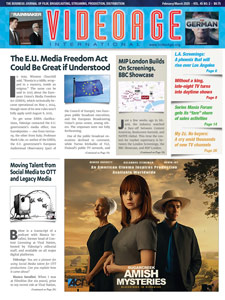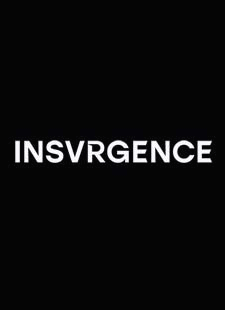To sell content, especially to the U.S. and Canada, producers need Errors and Omissions (E&O) insurance to protect buyers if anyone claims any infringement. The insurance covers every aspect of production. The only caveat is that insurers will let producers buy E&O coverage only if they don’t need it. In the U.S., this requirement came about in late 60s.
Considering the complexity of the subject, VideoAge asked Todd P. Leavitt (pictured above), an American producer and distributor with a legal background (who has also worked in Canada), to explain it.
Errors & Omissions (“E&O”) Insurance is a key element of all licensing transactions in the intellectual property marketplace. Whenever a television program is produced and then placed in the hands of distributors and end-users, E&O will be a necessary element of the deal.
This is the result of the extraordinary risk and exposure that accompanies the dissemination of intellectual property. Aggrieved parties, who believe that their copyright or trademarks have been infringed upon or that their other valuable properties rights have been violated, will frequently seek recourse in the courts of law to make them whole for the damage incurred. The potential risk to a distributor who has acquired rights can be enormous.
In the American legal system, aggrieved parties have the right to commence an action against any of the parties arguably involved in the wrongdoing. These parties can include sales agents, distributors, terrestrial and cable programming networks, and OTT platforms.
The industry has been able to ameliorate the risk with a commonly used strategy—purchasing an insurance product that will provide a “guarantee” that moneys will be available to satisfy any legal judgment that might eventuate, including legal fees. While virtually all agreements involving the licensing of intellectual property will have representations and warranties from the owner, producer or licensor that the material used in the program will not infringe upon any third party rights, the mere “promise” to protect, defend and reimburse (customarily called “an indemnity”) is relatively empty, absent some means of assurance that there will be a financially capable entity that will “make good” on any liability ultimately determined to accrue.
The production of any audio-visual program is a complicated matter. Frequently one is faced with the need to option underlying rights, to commission the creation of a screenplay, to depict actual living persons, and to use visual and musical elements owned by others. Each of these is incorporated in the final program, and each of these carries specific risks that individuals may come forward asserting their rights have been violated to their financial detriment. E&O Insurance was identified long ago as an appropriate remedy to the obstacle presented to licensees who are eager to acquire rights to distribute and exploit, but are not prepared to expose themselves to significant financial liability as a result of problems arising uniquely within the producer’s control.
Timing it Right
It is strongly recommended that E&O insurance be obtained as early as possible in the process of production. This is a result of the simple fact that when the insurance is first obtained, it is incumbent on the rights holder to disclose all “claims” or “clouds on title” that may be present in the project insured.
If there is some question that is known to the producer, that fact will need to be openly disclosed in the standard insurance application. The earlier in the process that application is made, the less likely it would be that the impact of press and publicity surrounding production would incentivize claims coming “out of the woodwork.” If there are potential problems regarding “clear title” of which the producer has knowledge (that is, a state where all constituent elements have been, to the best knowledge of the producer, properly licensed), it is crucial that they be fully disclosed to the insurance underwriter in the process of obtaining insurance coverage.
Upon disclosure, the underwriter will assess whether the potential claim is such that the premium paid for the insurance coverage should be increased, or even, in certain cases, whether insurance will be declined. The sooner producers can complete their E&O insurance application, the better off they will be.
Limits of E&O
In addition, it is important to note those matters that E&O insurance will not insure against. E&O will not protect a producer who knowingly has infringed the intellectual property rights of a third party. This is consistent with the “unclean hands” doctrine in the law, which precludes individuals profiting from their own misdeeds. Thus, if producers knowingly and intentionally includes copyrighted footage owned by someone else in their program, and has not obtained an appropriate license for the material, any otherwise available insurance coverage will be disclaimed.
Lawyers Needed
The extremely complicated and confusing world of intellectual property clearances is one of several very good reasons why production counsel needs to be involved in all aspects of review of the constituent elements of the production. In fact, every E&O Insurance application specifically requires that the producer’s attorney be identified, a confirmation that the attorney has both read the standard “Clearance Procedures” required by the insurer and also that the attorney will attest to the adequacy of the clearance efforts undertaken by the producer.
The procedures referred to involve all literary and musical intellectual property incorporated in the production, releases of all real-life individuals depicted in the production (including any fictional or composite characters that real-life individuals may believe have been depicted unfairly).
In addition to the attorney’s attestation, the insurer will require that the Producer provide a copyright report. This is a detailed report prepared by one of several well-known national clearance law firms that reviews each element of the production in its entirety (script elements, characters names, location names, prominently displayed props etc.), and advises as to publicly available information that may require additional clearance activities by the producer.
What It Costs … And Saves
The typical E&O Insurance Policy will contain limits of coverage of between $1 million and $3 million for each “occurrence” (essentially each claim) and between $3 million and $5 million in the aggregate (as a total ceiling for all insurable payments that may be called upon in connection with a production). Producers will, of course, have the opportunity to obtain a liability “umbrella” to provide further insurance protection if a claim should ripen to a judgment that would requirement payments in excess of the ceiling. Some production companies will actually self-insure, but such companies are typically limited to extremely solvent and deep-pocketed studios where all licensees believe that there exists the financial wherewithal to pay for any legal judgments without facing the risk of bankruptcy.
Absent an E&O policy, production entities (typically LLCs or LLPs) would have to be prepared to have a calamitous monetary judgement push them into insolvency and the result would be that the party that was indemnified would be forced to satisfy any judgment with no policy proceeds available. E&O policies typically have deductibles (that is, the amount that must be absorbed by the producer before the actual insurance proceeds commence paying for liabilities) of $10,000.
In summary, E&O Insurance is an invaluable risk management device that is an integral part of all licensing transactions in film, television and digital media, allowing licensees to acquire rights with the confidence that any legal problems that may arise, as a result of exploitation by the licensee, will have financial third party protection.
Content buyers don’t need to worry about the integrity of the intellectual property being licensed when they enter an output deal with a U.S. studio since they know it is backed by “the full faith and credit” of the licensor. Studios have deep pockets and are not disappearing; so requiring “insured indemnification” may not be deemed necessary. Some companies self-insure because they have very deep pockets of net worth.
“Indemnification” (i.e., the express or implicit agreement to stand behind representations regarding the integrity of the material being licensed) is typically part of every license agreement. “Insured Indemnification” (in other words, requiring an insurance policy to stand behind the promises of integrity in case they are breached) is an additional concept that end-users in any territory may require.
A typical E&O policy with no special issues presented will typically cost between U.S$5,000 and U.S.$10,000 and have a three-year duration (the period during which most claims would present themselves).
Umbrella coverage is for “back up” and fees will vary depending upon the scope of the protection purchased. It can include protection for things like personal injury — a person suffering an injury on set, for example. The concept is using risk management to avoid financial disaster.
Audio Version (a DV Works service)












Leave A Comment